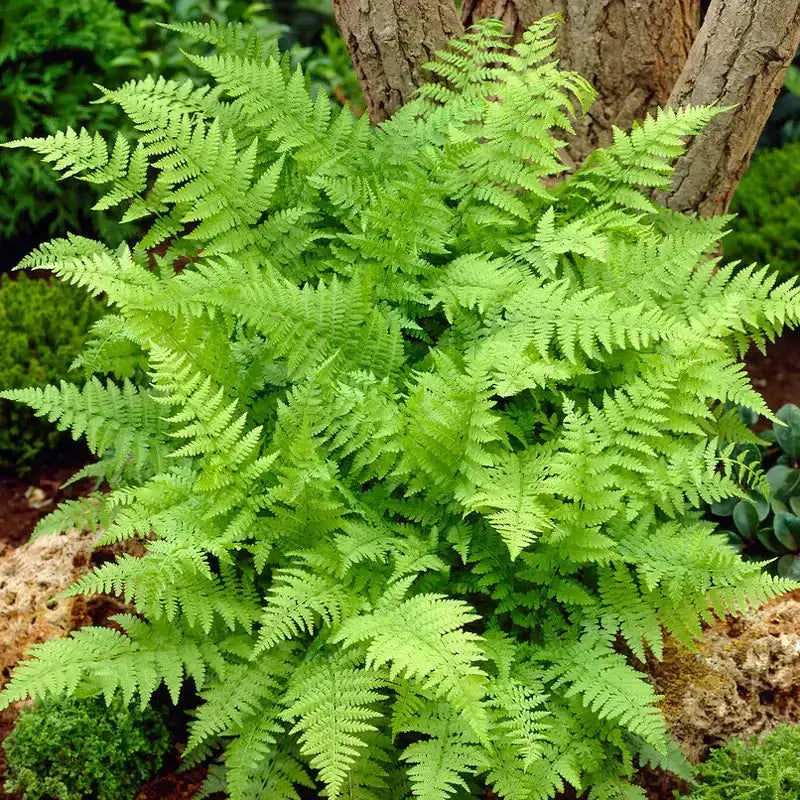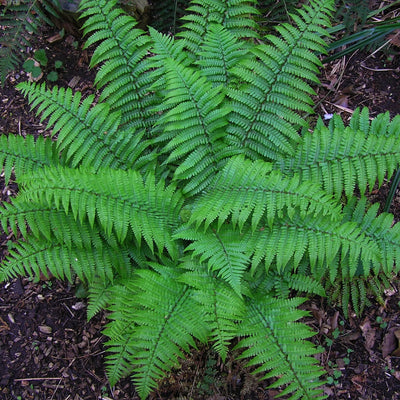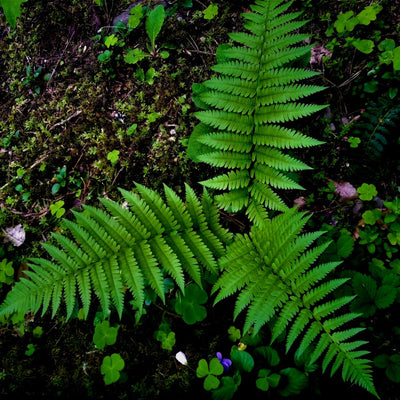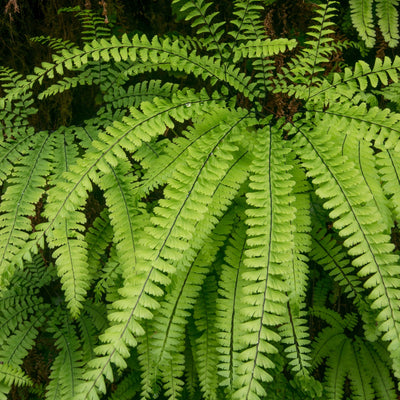Native ferns add style, texture and a touch of beauty from the past to any yard. These beautiful, lush plants have been around for millions of years and do best in damp, shady woods. These days gardeners use them to make peaceful gardens that last a long time and don't need much care.

Ferns plants are an excellent choice if you want to improve your shady backyard or add interest to your woods garden. TN Nursery has a lot of local ferns like the Christmas Fern and the Maidenhair Fern which are both known for being tough and beautiful.
Understanding Native Ferns and Their Natural Habitat
Native Ferns that grow naturally are particularly vital to the ecosystems of woods. They like to live in the understory of woody areas where the light is filtered and the soil is always lush and wet. Because they developed to fit in with their surroundings, they are naturally tough and don't need much maintenance once they are established.
Some ferns, such as the ostrich fern native to North America, grow in groups and spread slowly through buried stems. These ferns give companion plants in parks texture and a lush background. Planting native plants helps protect the variety of life in the area and keeps the environment healthy and balanced.
The Timeless Beauty of Ferns
The beauty and adaptability of ferns plants are unparalleled. Their fronds give any area movement and depth whether they are in a shade garden or a woodland path or a pot. The soft leaf designs and different shades of green make a relaxing atmosphere that goes well with both flowering plants and evergreens.
Here are a few common types of ferns that look great in landscaping:
- Christmas Fern: Its leaves are known for staying green all year - even in the winter.
-
Lady Fern: This soft and airy fern does well in some shade.
-
Maidenhair Fern: This fern makes shady areas look beautiful with its delicate and graceful leaves.
- Ostrich Fern (native): This is a big and straight fern that looks great as a border or natural screen.
The best way to use these types is to mix them with other woodland plants like hostas, trilliums and wildflowers. This makes them perfect for natural landscaping projects.
Native Ferns for Shade Gardens and Landscapes
Using native ferns to make a shaded garden is both fun and useful. Ferns like to grow in the shade and add lots of colour to places where other plants might have trouble. They are great for:
- Lining paths and borders with shade
- Moist woodland gardening
- Keeping slopes from washing away
- Providing ground cover under trees
One great thing about growing native ferns is that they can be used in a lot of different situations. They naturally fight off most pests and diseases and once they're established, they help keep the soil wet.
Like the Christmas Fern keeps the soil from washing away on slopes that are shady and the Lady Fern gives wet garden beds a soft and airy look, the combination of various types of ferns adds visual depth and variety by transforming a flat and shady area into a thriving environment.
Fern Care and Maintenance Tips
By taking the right steps to care for ferns you can make sure they stay lush and colourful all through the growing season. Ferns are tough but they do have certain needs when it comes to light, water and dirt.
For good fern care and maintenance, here are some important tips:
- Soil Needs: Ferns like dirt that is high in humus, drains well and stays moist. Putting down compost or leaf mulch makes it look like the forest floor where they live in the wild.
- Watering: Make sure the dirt is damp but not soaked. Ferns don't like it when it's dry, especially in the summer. Mulching helps plants keep their water and keeps the roots safe.
- Light: Most native ferns like it when they have some to full shade so keep the leaves out of direct sunlight which can burn them.
- Pruning and feeding: Get rid of any dead or damaged leaves to help the plant grow healthy new ones. To give plants more energy you can use a balanced organic fertiliser in the spring.
- Winter Care: Many plants can handle the cold and come back every year but one plant that stays green all winter is the Christmas Fern.
By taking these easy steps to care for ferns, you can have a thriving fern garden that adds texture and variety to your scenery.
Why Choose TN Nursery for Native Ferns
For premium ferns plants and other natural species TN Nursery is a reliable source which is in business for more than fifty years and specialises in native plant preservation and environmentally friendly growing methods.
People from all over the U.S. choose TN Nursery because:
- A lot of choices: From Maidenhair Ferns to Ostrich Ferns you can find a type that will grow well in your area.
- Practices that are good for the environment: Our plants are grown in a way that doesn't harm local wildlife or insects.
TN Nursery makes it easy to find native ferns that do well, whether you want to make a natural forest hideaway or just add some greenery to a dark spot.
FAQs
What is Native Ferns?
Native ferns are plant species that grow naturally in a certain area and have adapted to the soil and temperature there.
How to care for ferns?
For the best results, keep the dirt moist, give it shade and add organic matter to it.
Which native fern varieties are best for shaded gardens?
The Christmas Fern, the Lady Fern and the Maidenhair Fern are all great plants for places that are dark and damp.
What are the benefits of growing native ferns in home gardens?
They help wildlife, require less upkeep and make shaded places look better.
Best places to buy native ferns online?
TN Nursery is where you can order fresh, healthy ferns plants.




